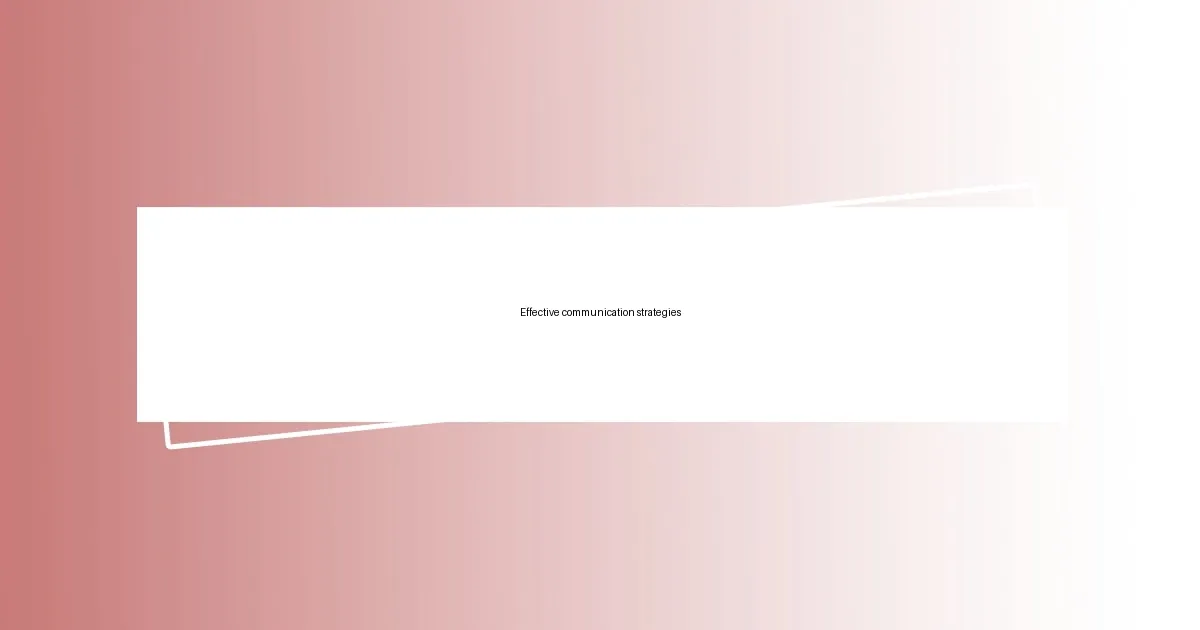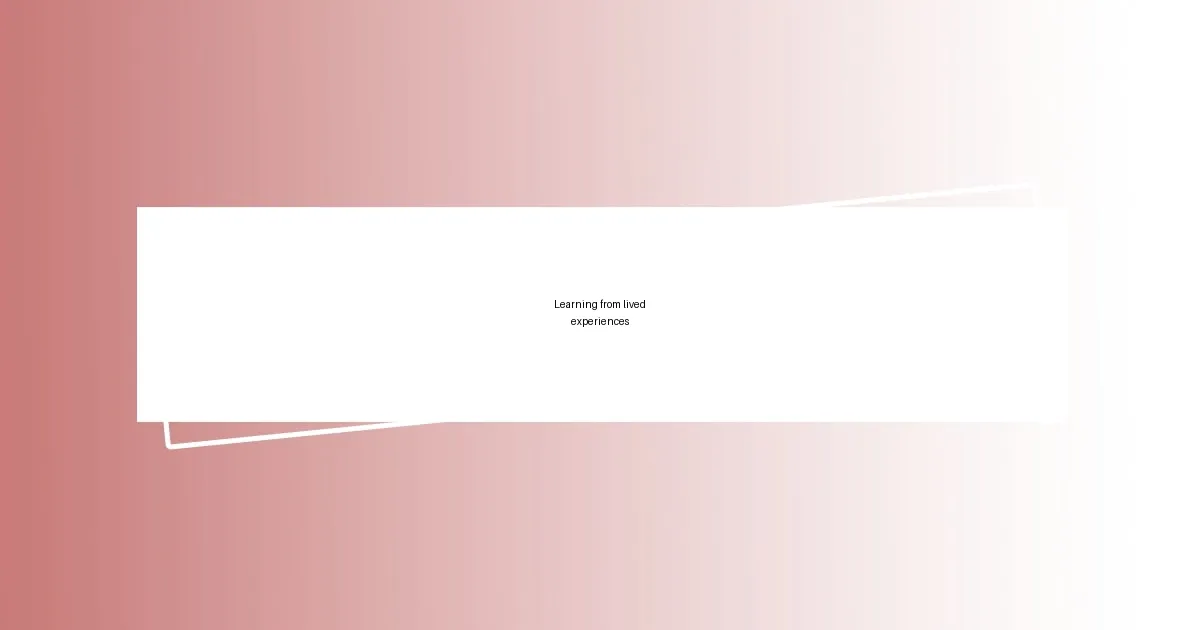Key takeaways:
- Cultural challenges arise from differences in values and communication, requiring empathy and active learning to navigate.
- Recognizing personal biases allows for deeper understanding and fosters respectful cultural exchanges.
- Effective communication, including adapting behavior and clarity in language, is essential for bridging cultural divides.
- Engaging fully in cultural experiences and embracing flexibility leads to meaningful connections and enriched perspectives.

Understanding cultural challenges
Cultural challenges arise from the differences in values, beliefs, and communication styles that exist between diverse cultural groups. I remember my first business trip to Japan; I was struck by how indirect communication could sometimes feel like a puzzle. Has anyone else experienced that moment when a simple “yes” could mean anything but an agreement?
Navigating through cultural nuances can often lead to misunderstandings. For instance, when I attended a dinner in India, I noticed that eating with my left hand felt awkward due to cultural implications surrounding hand usage. It made me reflect: How often do we unconsciously impose our cultural norms on others, thinking they are universal?
Understanding these challenges requires empathy and a willingness to learn. Each encounter with a different culture can be a lesson; what I’ve found is that genuinely listening and asking questions not only enriches my experience but also fosters deeper connections. Isn’t it fascinating how a small act of curiosity can bridge so many gaps?

Recognizing my own biases
Recognizing my own biases is a crucial step in navigating cultural challenges. I recall a time when I was surprised by my instinctual reactions to unfamiliar practices. During a meeting with a South American team, I was taken aback by their relaxed approach to timekeeping. Initially, I viewed their punctuality as a lack of professionalism, not realizing it stemmed from a different cultural perception of time. This moment of reflection made me recognize how biases can cloud judgment and limit my understanding of diverse perspectives.
I’ve often found that biases operate quietly in the background, shaping my expectations before I even realize it. On a trip to Morocco, I was nervous about trying local dishes, fearing they might not be to my taste. It took a push from a local friend to embrace the unfamiliar. That bite of spicy tagine opened up a world I had nearly closed off due to preconceived ideas about foreign cuisine. This served as a powerful lesson; recognizing my biases not only expanded my palate but also my connection to the culture.
Reflecting on my experiences has taught me that biases stem from our backgrounds and experiences, but they can also be overcome with conscious effort. One practice that has worked for me involves actively questioning my assumptions when faced with cultural differences. For example, when I found myself in a heated discussion about gender roles in a new environment, I paused, acknowledged my biases, and approached the dialogue with curiosity. This shift in perspective allowed me to engage more empathetically, fostering mutual respect and understanding.
| Type of Bias | Personal Insight |
|---|---|
| Bias Against Time Orientation | My initial frustration during meetings with teams in cultures that view time more fluidly led to a deeper understanding of diverse work styles. |
| Food Bias | Overcoming my reluctance to try local dishes in Morocco led to new experiences and friendships grounded in culinary exploration. |
| Cultural Stereotyping | Recognizing my assumptions about gender roles opened a doorway to more respectful and enriching conversations. |

Building cultural awareness skills
Building cultural awareness skills means actively seeking to understand and appreciate the differences that make each culture unique. I remember during a volunteering trip in Southeast Asia, I felt a profound moment of connection with a local woman. Despite our language barrier, we used gestures and expressions to share stories about our lives. That experience showed me that cultural awareness goes beyond words; it’s about genuinely engaging with others and being open to learning through shared experiences.
To effectively build cultural awareness skills, consider incorporating the following practices:
- Educate Yourself: Research cultural norms, traditions, and values prior to interactions, seeking knowledge to create a respectful dialogue.
- Engage in Conversations: Encourage open discussions with individuals from diverse backgrounds, allowing them to share their perspectives and experiences.
- Practice Active Listening: Pay close attention when others speak, not just to respond, but to understand their viewpoint and learn from their story.
- Reflect on Your Interactions: After cultural exchanges, take a moment to reflect on what you’ve learned and how it has challenged your previous beliefs or assumptions.
- Embrace Uncertainty: Appreciate that not every interaction will go smoothly. Allow yourself to feel uncomfortable, as these moments are often the most enlightening.
By prioritizing these practices, I find that my interactions become richer and more meaningful, fostering connections that transcend cultural barriers.

Effective communication strategies
Effective communication is vital in bridging cultural divides. I remember a time when I was in a negotiation with a team from Japan. Their indirect communication style initially confused me. However, I learned that my questions needed to be phrased more delicately, showing respect while encouraging open dialogue. This experience highlighted how adapting my communication approach can foster deeper connections and facilitate more productive conversations.
One strategy that I find particularly beneficial is mirroring body language. It seems small, but when I attended a business meeting in Germany, I noticed how the team members responded positively to my subtle mimicry of their gestures and postures. It created a sense of rapport and understanding, which is crucial when navigating subtle cultural nuances. Can you remember a time when adjusting your own body language changed the tone of a conversation? It’s fascinating how something so visual can convey respect and unity.
When communicating across cultures, clarity is key. I recall participating in a cross-cultural training session where we practiced using clear and simple language, avoiding idioms or slang that might confuse others. During this workshop, it struck me how easily misunderstanding can arise from our language choices. Afterward, I made it a point to simplify my speech in diverse settings, realizing that effective communication not only respects cultural differences but also empowers everyone involved to express themselves fully.

Adapting behavior in diverse settings
It’s intriguing how adapting behavior in diverse settings can feel like stepping onto a different stage, where the audience’s reactions are shaped by their cultural backgrounds. I recall a workshop I attended, where participants hailed from various countries. As we engaged in team-building activities, I noticed that my usual assertiveness in discussions didn’t resonate well with colleagues from more collectivist cultures. This taught me the value of using a softer approach, inviting quieter team members to share, and ensuring that everyone felt included. Isn’t it fascinating how one small change in our behavior can transform the dynamics of a group?
Embracing a flexible mindset has been pivotal for me. During an internship in a multicultural office, my supervisor emphasized the importance of patience and understanding. In one instance, I was working with a colleague from a high-context culture who preferred indirect communication. Initially, I was frustrated, thinking they were withholding information. However, I quickly learned to adjust my expectations, allowing space for them to elaborate. This not only improved our collaboration but also deepened my appreciation for different communication styles. Have you ever felt the shift in your perspective when you choose to adapt?
I’ve also found that observing and respecting local customs can make a significant difference in how I navigate diverse environments. A memorable experience was during a business trip to India. I was invited to a cultural celebration, and instead of sticking to my usual attire, I chose to wear traditional clothing. The warmth of the smiles and the open conversations that followed made me realize how showing respect for local customs can enhance relationships. It’s a simple yet powerful reminder that adapting our behavior can pave the way for richer interactions, don’t you think?

Learning from lived experiences
Learning from lived experiences has been one of the most enriching aspects of navigating cultural challenges. I once found myself in a small village in Mexico, where the rhythms of life were slower and more community-oriented. I felt out of place at first, grappling with a sense of isolation. But when I joined a local cooking class, I discovered how sharing experiences through food can break down barriers. Each dish we prepared told a story, and suddenly, I felt not just like an observer but like part of a tapestry woven from shared flavor and tradition. Isn’t it amazing how something as simple as cooking together can foster connection?
A poignant memory I have is from my travels in Thailand. I participated in a traditional festival and was initially hesitant about jumping into the festivities. However, the genuine hospitality of the locals encouraged me to immerse myself fully, which resulted in laughter, dance, and unexpected friendships. This openness taught me that actively engaging in cultural practices can lead to profound moments of learning. Have you ever jumped into a new situation only to find it transformed your understanding of a culture? The thrill of embracing the unfamiliar is something I treasure deeply.
Reflecting on these experiences, I realize that vulnerability often opens the door to deeper understanding. During a discussion with a friend from Nigeria, I shared my feelings about struggling with cultural differences. His response, filled with empathy and his own stories of adjustment, created a safe space for dialogue. This encounter highlighted that truly listening and being honest about our challenges can bridge not just cultural divides but also foster mutual respect. Isn’t it truly enlightening how our collective experiences shape our perspectives, allowing us to learn from one another?

Developing resilience and flexibility
Resilience and flexibility have often been my required tools when navigating cultural challenges. I remember stepping into a community center in Berlin, where I volunteered during a summer break. The diverse group of individuals came with their unique histories and communication styles. I realized that if I clung to my expectations of interaction, I would miss out on beautiful connections. By being open to the ebb and flow of conversations, allowing others to lead discussions, I found that it fostered a more inclusive environment. It made me wonder—how often do we limit our experiences because of rigid expectations?
There was a moment during a cultural exchange program where I faced a significant language barrier. The day was filled with lively dialogues in a language I barely understood. Instead of letting my discomfort take over, I chose to listen actively, focusing more on laughter and body language than words. This experience taught me that flexibility isn’t just about adapting; it also involves letting go of your usual comforts. Has there ever been a time when you felt lost yet embraced the chaos? I learned that sometimes, the most profound connections happen when we surrender our need for clarity.
One of the more memorable lessons came from a hiking trip in Peru alongside locals who had a deep bond with their landscape. As plans continually changed due to weather and path conditions, I felt my frustrations rise. But instead of resisting, I decided to go with the flow, cherishing the chance to marvel at the unplanned beauty around me. In those moments, I became part of a community that valued spontaneity over strict itineraries. It made me contemplate—what treasures do we miss when we are too focused on sticking to plans? In a world filled with surprises, staying resilient and flexible allows us to embrace life’s wonderful unpredictability.














